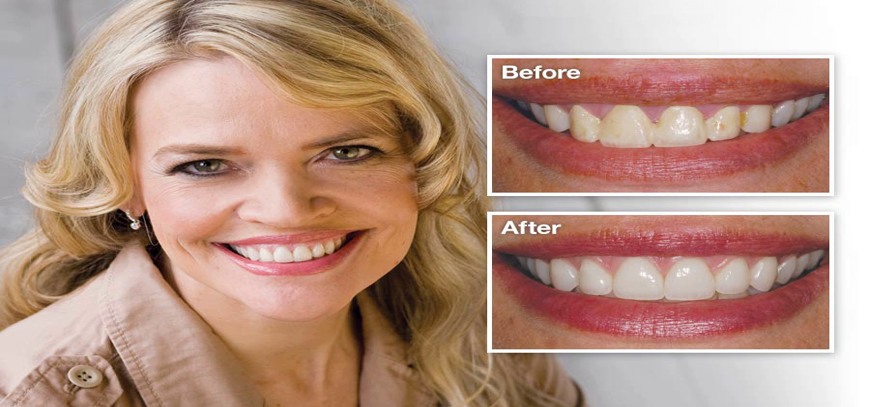Porcelain Veneers

A veneer is a thin moulding, custom-made from porcelain, which is bonded to the front surface of a tooth. Veneers are a quick and effective solution to stained, chipped, misshapen or crooked teeth. They can also be used to cover gaps in teeth where orthodontic treatment may not be suitable.
Veneers are a cosmetic treatment. They cover only the front surface of the tooth and will mimic the size, shape and colour of your teeth, creating a very natural look. A precise shade of porcelain can be chosen to give the right colour to improve a single discoloured tooth or to lighten your front teeth.
Benefits of Veneers
Veneers provide a very natural finish. If you are concerned about misshapen, chipped or discoloured teeth, veneers can offer a long-lasting cosmetic solution.
The colour of the porcelain veneer can be selected to match your existing teeth or to make them appear whiter. The porcelain finish also mimics the light-reflecting qualities of natural teeth, helping you achieve a brighter, natural looking smile.
Porcelain veneers are also more stain resistant and durable than composite bonding, and if looked after properly, can last for many years.
Veneers offer a gentler approach to altering a tooth’s shape or colour than crowns, as only a small amount of enamel has to be removed to fit the veneer. Yet they offer similar strength and very natural looking results.
Downside of having Veneers
Veneers are considered a long-term solution to imperfect teeth, once you’ve had them fitted, it’s an irreversible procedure. It can take a few weeks to get used to the new feel of having dental veneers.
Your dentist will need to change the structure and shape of your teeth to apply the veneers and remove the outer layer of enamel.
In some cases patients can also experience increased sensitivity after having veneers fitted.
Veneers are routinely used to fix:
• Teeth that are discolored because of:
◦ root canal treatment
◦ stains from tetracycline or other drugs
◦ excessive fluoride
◦ large resin fillings
◦ other causes
• Teeth that are worn down
• Teeth that are chipped or broken
• Teeth that are misaligned, uneven, or irregularly shaped (for example, have craters or bulges in them)
• Teeth with gaps between them (to close the space between these teeth)
Alternative options to veneers are:
Composite bonding – bonding is a fast, non-invasive procedure which can usually be completed in a single appointment. A composite resin is attached to the tooth to restore its natural shape and colour.
Crowns – a crown is a tooth-shaped cap that’s placed over the entire visible portion of your tooth. A crown will feel and function just like any of your other teeth. And if you choose to have a porcelain. crown, it will be virtually indistinguishable from your other teeth.
Orthodontics – fixed or removable braces can be used to straighten misaligned teeth and close gaps. Advances in orthodontics mean that braces can now be virtually invisible.
It’s important to consider all of the options available to you. Here at Desntist on the Green, we will be able to explain the different processes and advise you about which treatment best suits your individual needs.
After the procedure, your gums may feel a little sore. This is normal and will settle down after a few days of careful brushing. Veneers are easy to maintain – they simply require the same care as your other teeth. Regular brushing, flossing, dental check-ups and hygienist appointments will help keep your veneers looking good for years.
